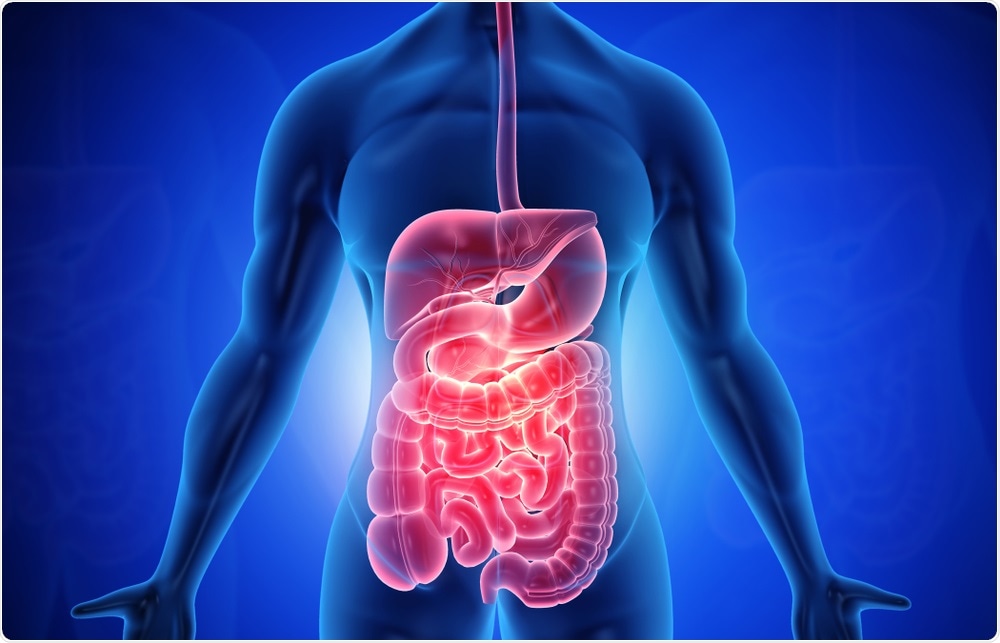Researchers from EMBL Hamburg and the Centre for Structural Systems Biology (CSSB) identified the molecular structure of a gut protein that aids the absorption of various drugs. This finding can help produce drugs that reach target tissues more effectively.

Image Credit: Explode/Shutterstock.com
The promiscuous protein that keeps us nourished
Digestion breaks down the proteins we consume into smaller pieces named peptides, which have amino acids that the body later employs to construct its proteins. Before that, peptides are transported from the gut to the bloodstream, which is carried out by a molecule known as peptide transporter 1 (PepT1). This transporter is found in the cell membrane of the intestine wall and transports small peptides across the cell membrane.
The human body contains around 800 transport systems for various kinds of nutrients and the majority of them are very specialized. For instance, specific sugar transporters can transfer only one kind of sugar. But PepT1 can transfer almost any kind of short peptide, an ability termed “promiscuity” scientifically.
Team Leader Christian Löw is EMBL Hamburg’s specialist on membrane proteins. His team along with co-workers from the Centre for Structural Systems Biology (CSSB) and the Universitätsklinikum Hamburg-Eppendorf (UKE) identified the molecular structures of human PepT1 and its relative PepT2, which is mainly found in the kidney for nutrient resorption.
The researchers employed cryo-electron microscopy—a technique where frozen samples are imaged using electrons instead of light.
New possibilities to improve drug design
The promiscuity of PepT1 allows it to transport different types of drugs, including some antivirals, antibiotics, and drugs for hypertension along with the nutritious peptides. PepT1 transfers drugs less effective when compared to the numerous natural peptides.
As a result, only a fraction of the drugs ends up in our bloodstream while the rest stays in the gut leading to numerous side effects. In the case of antibiotics, raising drug dosage to make up for ineffective transfer is especially dangerous as it might lead to the formation of antibiotic-resistant bacteria.
Now that we know what the PepT1 structure looks like, it will be possible to design new drugs that exploit PepT1 to cross the gut wall much more efficiently than before. The structure of human PepT1 will allow us to improve drug design by making the absorption more efficient.”
Christian Löw, European Molecular Biology Laboratory, Hamburg Unit
Löw also adds, “Currently, it’s almost impossible to predict whether a drug candidate can cross the gut wall via this transport system. Until now, obtaining such a drug has been very challenging.”
Many potentially effective drug candidates have failed in preclinical studies because they were poorly absorbed. With the help of the structural information for PepT1, some of those failed candidates could be redesigned so that they could be transported efficiently by PepT1. Similarly, many existing drugs could be modified to improve their absorption.”
Christian Löw, European Molecular Biology Laboratory, Hamburg Unit
Watching the transporter in stop-motion
The molecular structure of human PepT1 is one of the smallest structures recognized with cryo-electron microscopy. It imitates a clamp that is open towards the inside of the gut. Upon binding of a peptide to PepT1, the clamp closes around it and later opens to the other side of the membrane to discharge it. The researchers identified the structure of the transporter and also captured it in different states of the transport cycle.
We visualized the entire transport process in molecular detail, like in a film. Membrane proteins are notoriously difficult to study, but we hope that the tricks we developed to study PepT1 will help other scientists to solve the structures of similar proteins in the future.”
Maxime Killer, Study First Author, European Molecular Biology Laboratory, Hamburg Unit
Source:
Journal reference:
Killer, M., et al. (2021) Structural snapshots of human PepT1 and PepT2 reveal mechanistic insights into substrate and drug transport across epithelial membranes. Science Advances. doi.org/10.1126/sciadv.abk3259.